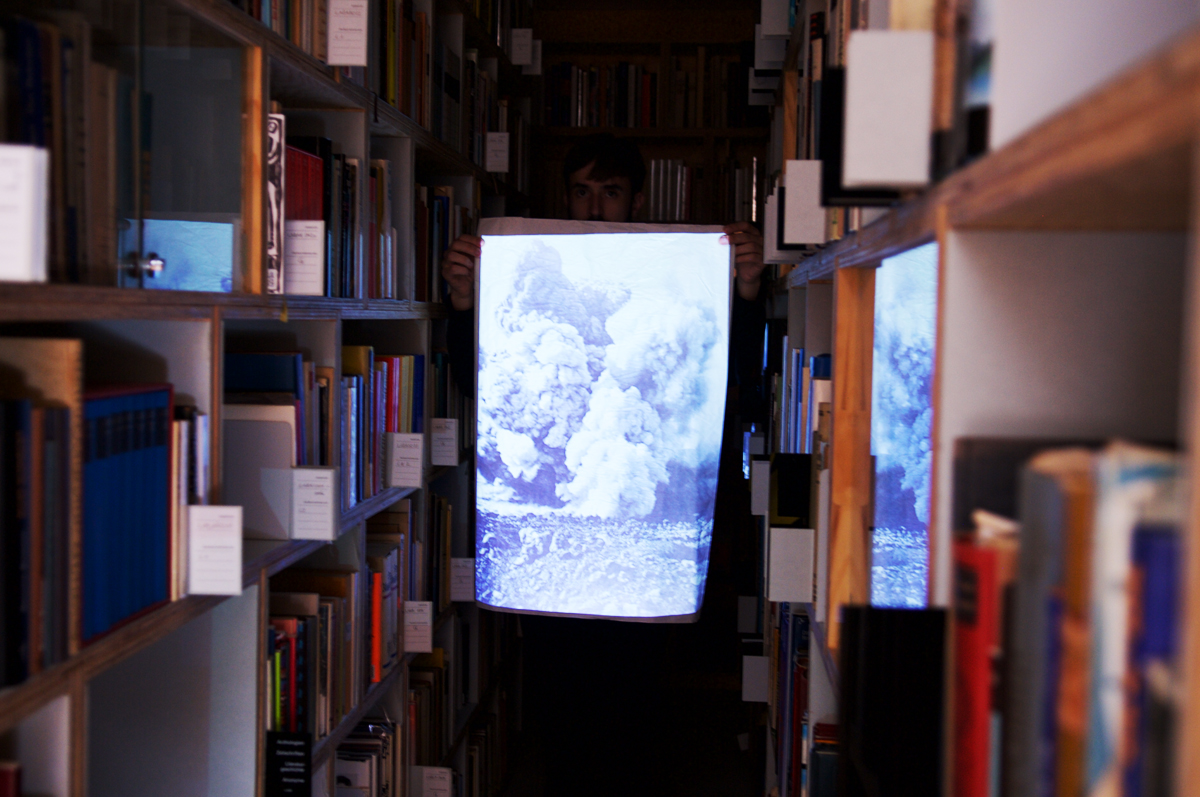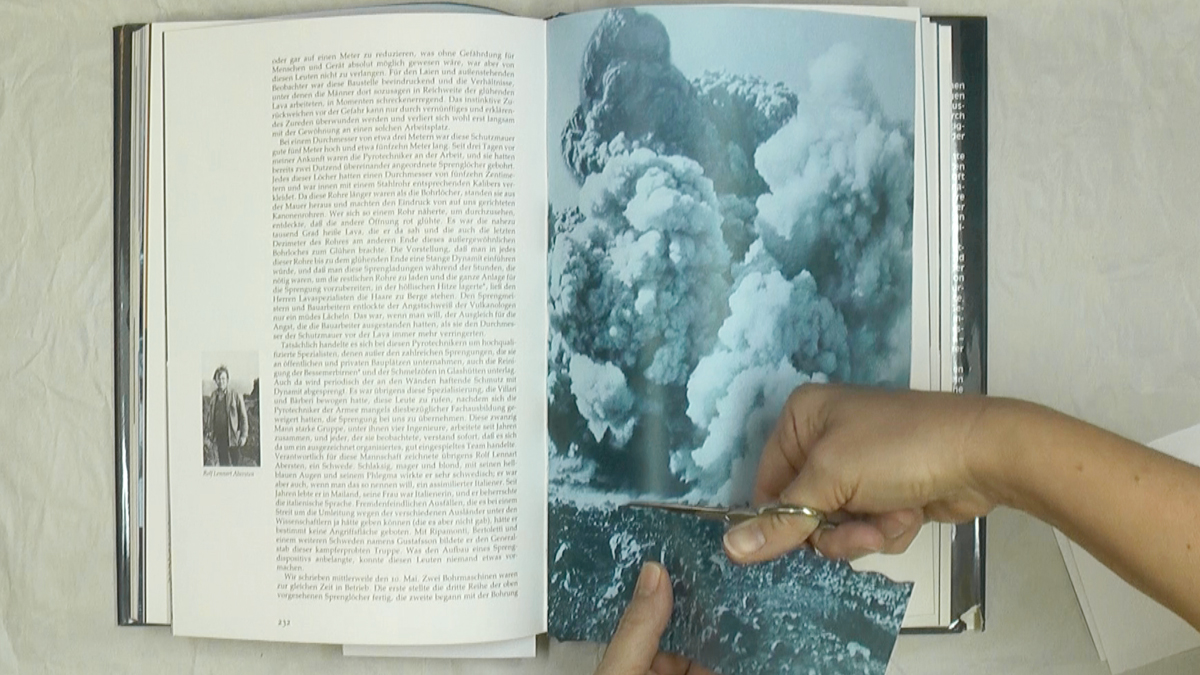In the Andreas Züst’s library, the session Geologie in the shelves is at eye level. It comes before the session Vulcanologie and Terremotologie. Palenteology – Geology – Terremotology – Mineralogie – Caves – Glaciologie, are side by side in the ground floor. They form a horizon of related subjects making one entire side of a corridor, as a line drawing a chain of mountains.
Above these shelves there are books on Meteorology, Winds, Storms, Natural Hazards, Climate, Climate Change, – it is the sky above the geologic layer. On the other side of this configuration of weather and geology, we find Astronomy, – as a complementary opposite. Above the line at eye level on the side of Astronomy, there is an important block on the subject of light, physique and chaos. This block of content forms the universe, one where the sky touches the Earth. Or, seeing this single wall with shelves on two sides we study Earth with weather on top hiding the universe on the other side.
One Volume: In the Great Alaska Earthquake of 1964, published in the Human Ecology collection of the National Academy of Sciences in Washington D.C. in 1970, “Lessons for coping with disaster” comes after the “Impact of the Earthquakes”.
In the studies of the post-disaster period (Appendix), it is first analysed the Migration data. Then comes the Measurement of School Enrolment. – School frequency measures trust on the land. Education gives stability, or a ground.
The Economic Effects of the Disaster (p. 58) were analysed before the Impact of the Event on Health and Mortality (p. 77). What does this choice of sequence mean?
In “Lessons for coping with disaster” the author writes about the issue of warning. He says: “The movement of the ground in earthquakes of moderate or severe intensity is so obvious that the events provides its own warning signs”. After that, he lists actions that will minimise the probability of injury and death’: 1. Move as quickly as possible to locations where falling objects cannot hit you.
Another volume: In the book Confronting Climate Change – Risks, Implications and Responses, from 1992, editor Irving Mintzer first asks, “What do we know so far about the foreseeable dangers of climate change?” At the end of his introduction, he says “climate change offers an important and unique opportunity to use the threat of global environmental change as a vehicle for expanding international cooperation”. The word “opportunity” seems inopportune in 2018, it can be associated to the arrival of a new market, – which in reality it is. Cooperation may also be less humanitarian than we would think, as it may be tied to the benefit of some.
In the organisation of contents, “The Science of Climate Change” comes before the “Impacts of Global Climate Change”. As it is, explaining and discussing climate change adds negatively to its impacts, it delays the elaboration needed from understanding the impacts themselves. It is as if a patient before being treated needed to listen to the doctor presenting his professional life.
The only photograph in this book is of the surface of Mars. In the page before the picture, an analysis of the “vanished greenhouse of Mars”. We may think the author considers Mars to be our future: frozen. But afterwards, it says Earth averted the deep freeze of Mars because the Earth’s crust has remained geologically active. We thank the volcanoes and all tectonic movements, other disasters etc.
In this book’s index under the letter “w”: “Wait and see strategy”. See also “Business as usual” scenario; “No regrets” strategy. After all other “w” entries, comes the final Worst case scenarios.
November 2018
Text: Mabe Bethônico



